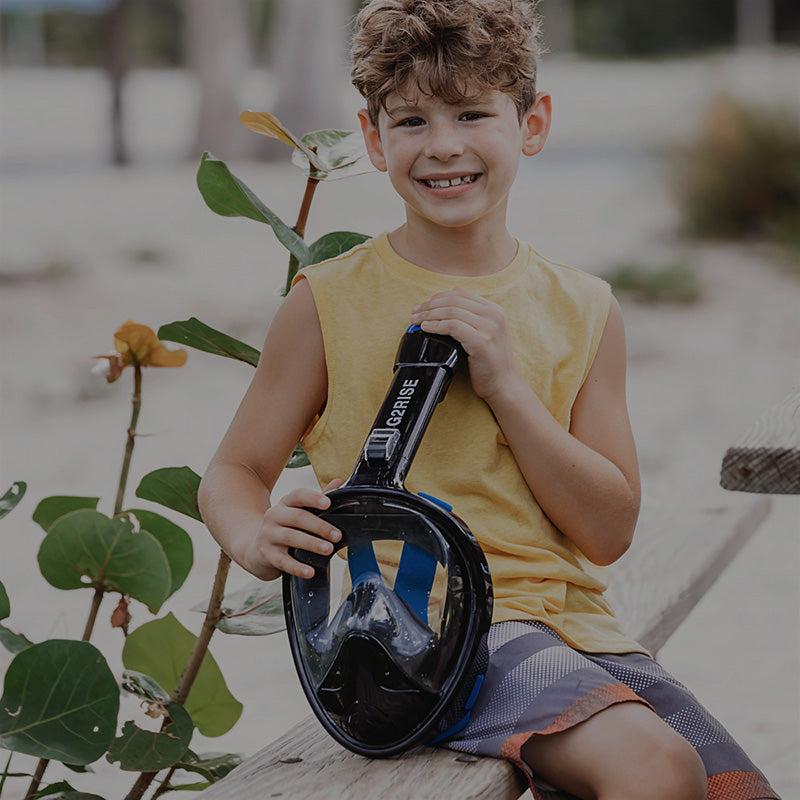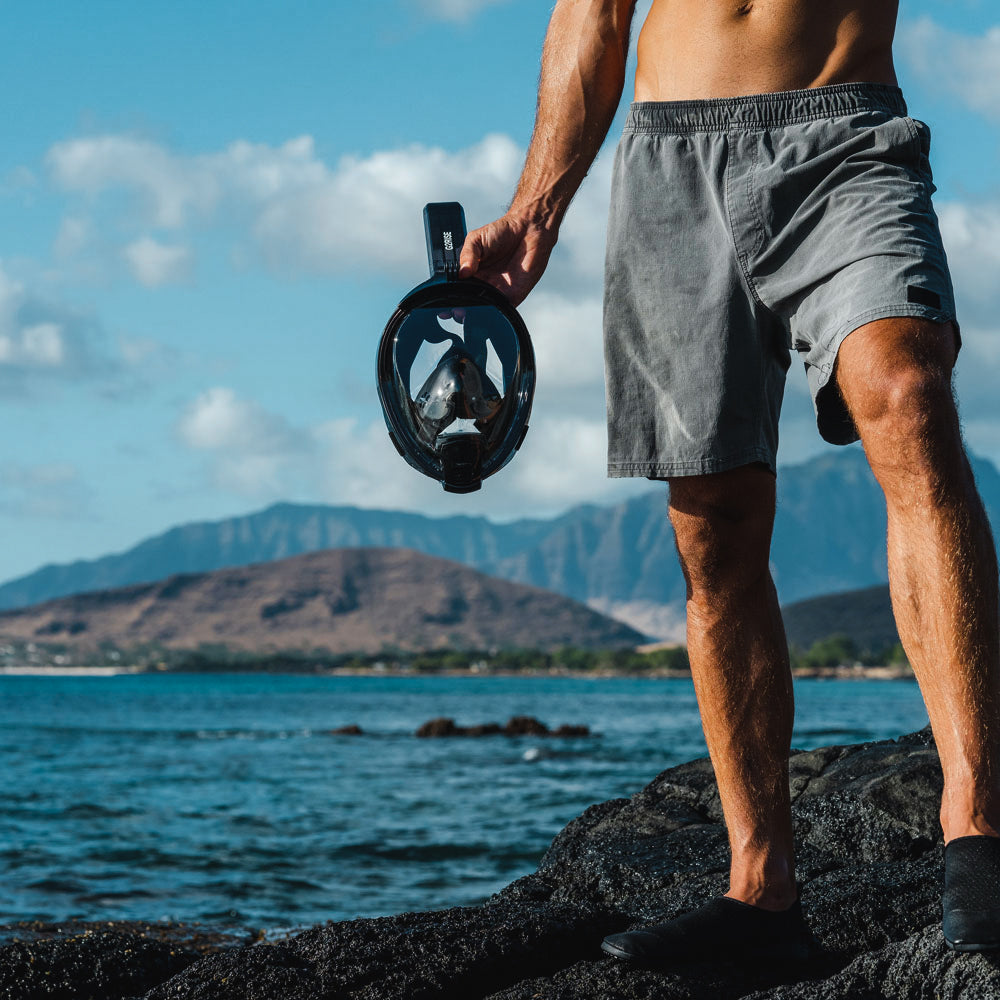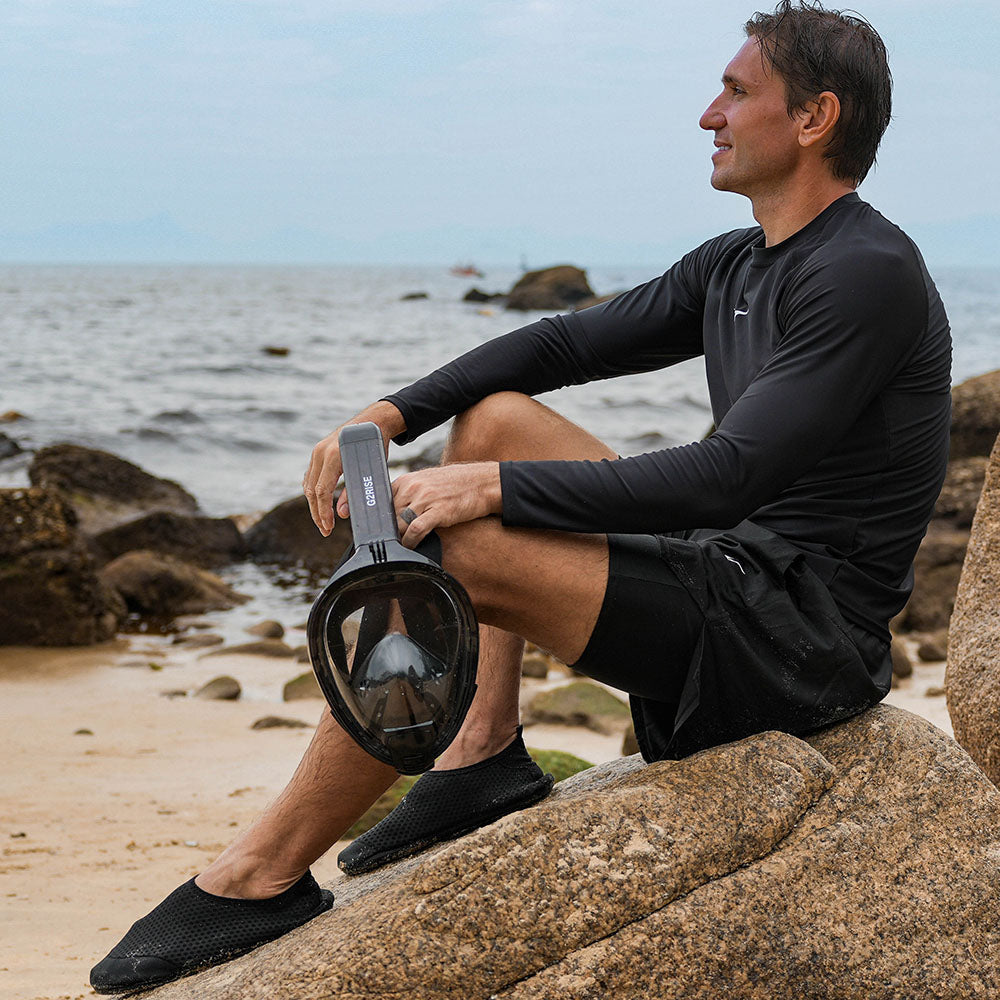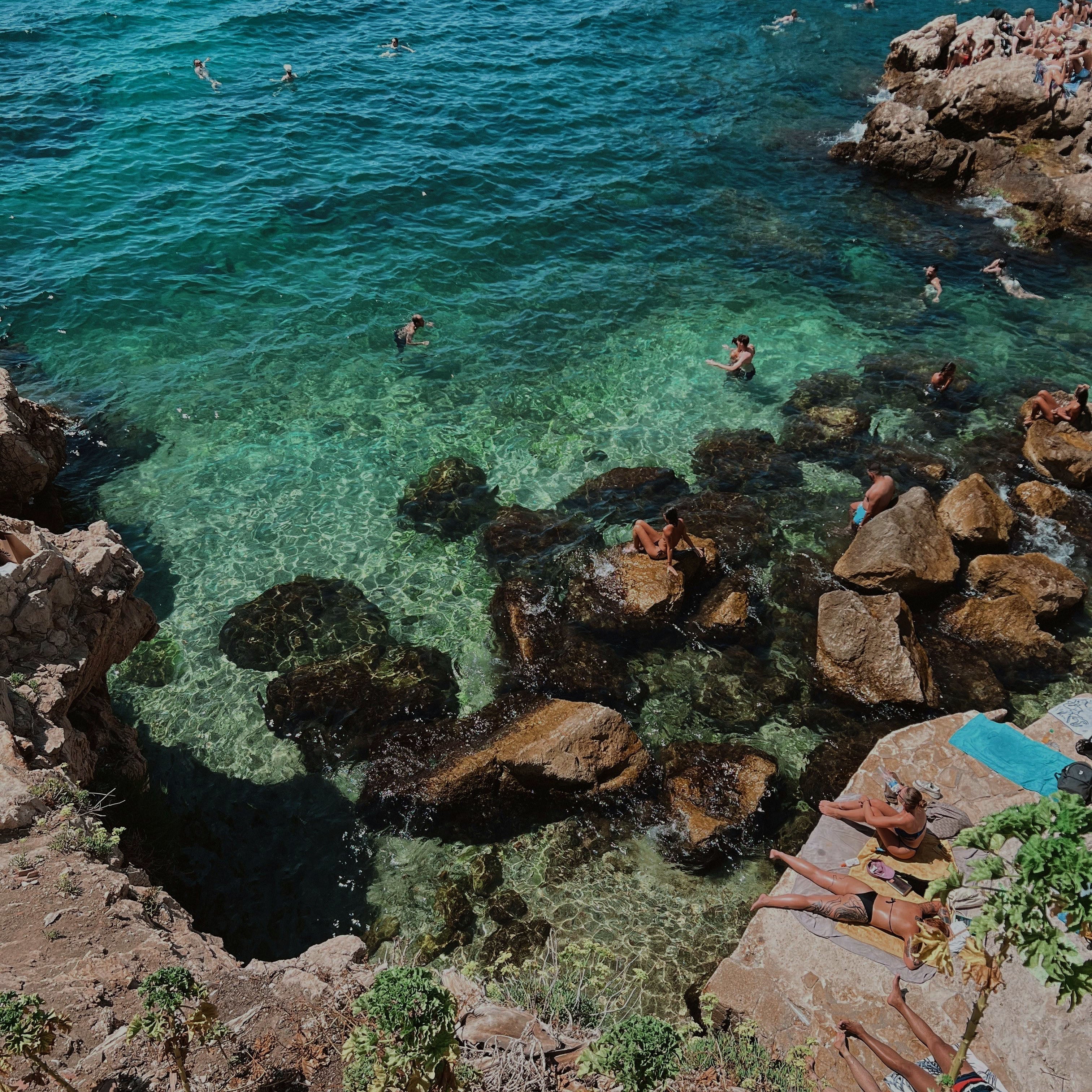After a day of snorkeling, you're left with wonderful memories and that familiar tight, salty feeling on your skin. While it's a sign of time well spent in the ocean, the mix of sun and saltwater is tough on your skin and hair, leaving them dehydrated and stressed. If not addressed, this can lead to uncomfortable irritation and brittleness. This guide outlines a straightforward care routine to properly clean and restore your skin and hair, so you can prevent damage and feel comfortable after your adventure.

Snorkeling's Toll: How Sun, Salt, and Sand Affect Skin and Hair
A day of snorkeling is refreshing, but the combination of saltwater, sun, and friction takes a toll on your body. Recognizing these specific stressors is the first step toward effective after-care.
- Saltwater Dehydration: Saltwater has a dehydrating effect, drawing essential moisture out from your skin and hair. As the water evaporates, it leaves behind salt crystals and mineral deposits that can cause hair to become brittle and leave skin feeling tight and parched.
- Sun Exposure Damage: The sun's UV rays are a major cause of sunburn and can accelerate skin aging by breaking down collagen. This exposure also causes oxidative stress, which damages skin cells and weakens their natural protective barrier.
- Friction and Irritation: Sand acts as a natural exfoliant but can easily cause redness and irritation. More importantly, the constant rubbing of snorkel gear and swimwear against your skin can lead to painful chafing and raw spots that require gentle care to heal.
These elements combine to leave your skin and hair feeling stressed and vulnerable. The right response begins the moment you step out of the water.
What to Do in the First 30 Minutes After Snorkeling
The first half hour after you get out of the water is highly important for how well your skin and hair recover. To get rid of harmful leftovers and stop future aggravation, pay attention to these three quick measures.
1. Rinse Immediately with Fresh Water
The first step is the most important one. A rinse with fresh water gets rid of the salt crystals that keep drawing moisture from your skin and the rough sand. Use the shower beside the beach if you can. A big bottle of fresh water works just as well, though. Make sure to wash your face, especially where the snorkel mask was, and pour water through your hair to clean your scalp and strands.
2. Pat Your Skin Dry Gently
Don't rub your skin with a towel. Skin that has been in the sun is sensitive, and rubbing it hard might make it worse. Instead, use a clean, soft towel to gently wipe yourself dry. Microfiber is a great choice. This strategy takes in moisture without putting further stress on your skin.
3. Find Shade and Cover Up
Even when you're not in the ocean, you might still get UV rays, so get out of the sun as soon as you can. Wear a wide-brimmed hat, sunglasses, and loose, breathable clothing like a cotton shirt to stay safe. A rash guard with a UPF (Ultraviolet Protection Factor) rating is also a good way to keep the sun's rays from getting to your skin.

Your At-Home Skincare Routine After Snorkeling
When you get home, your skin needs a complete routine to properly cleanse, soothe, and rehydrate. Following these steps helps repair the skin’s natural barrier and restores the moisture lost to sun and salt.
1. Cleanse Gently in a Lukewarm Shower
Start with a lukewarm shower, as hot water can strip your skin of its natural oils and worsen dehydration. Use a gentle, hydrating, pH-balanced cleanser for both your face and body. Avoid harsh soaps or aggressive scrubs like loofahs—your hands or a soft cloth are all you need for post-ocean skin.
2. Soothe Sun-Exposed Skin and Chafing
After gently patting your skin mostly dry, calm any inflammation.
- For Sun Exposure: Apply a generous amount of pure aloe vera gel. It effectively cools the skin and reduces redness and discomfort.
- For Chafing: On areas irritated by gear, use a product with calming ingredients like calendula, chamomile, or oat extract.
3. Moisturize to Rehydrate and Repair
This is a critical step for restoring your skin's health. Apply moisturizer while your skin is still slightly damp to lock in hydration most effectively.
- For Your Face: Use a facial moisturizer with ingredients like hyaluronic acid for deep hydration, ceramides to rebuild the skin's barrier, and niacinamide to calm redness.
- For Your Body: Choose a rich body lotion, cream, or butter containing nourishing ingredients like shea butter, cocoa butter, or coconut oil to replenish moisture.
4. Treat Sensitive Areas Like Lips and Eyes
Don't forget the delicate spots. Apply a moisturizing lip balm (one with SPF is ideal for daytime) to prevent chapping. For the thin skin under your eyes, use a gentle, hydrating eye cream to restore moisture.

How to Restore Your Hair After Snorkeling
The sun and saltwater can make hair feel dry, fragile, and tangled. This specific technique will help you gently rinse away any leftover product and deeply hydrate your hair to bring back its luster and softness.
1. Cleanse Gently to Remove Buildup
Concentrate on getting rid of salt and mineral buildup without taking away the oils that are naturally in your hair. A sulfate-free moisturizing shampoo is the finest choice for a regular wash. Put the shampoo on your scalp to break up buildup, and allow the suds to drip down to rinse the rest of your hair. You can use a light clarifying shampoo to get rid of more dirt if you feel a lot of residue, but you should follow it up right after with a very moisturizing conditioner to keep your hair from getting any drier.
2. Deep Condition to Add Moisture
After snorkeling, your hair needs a lot of moisture to become soft and easy to style again. Put a thick conditioner on your hair after you shampoo it, focusing on the middle to the end. Let it sit for at least 3 to 5 minutes before rinsing. A deep conditioning mask can make a big impact after a long day in the ocean if you want to fix things more thoroughly. Finally, spray a leave-in conditioner through damp hair to keep it moist for a long time and make it simpler to untangle.
3. Detangle Carefully to Prevent Breakage
You should be careful with wet hair because it is weak. Do not use a bristle brush on wet, tangled hair since it will break and shatter. Use your fingers or a wide-toothed comb instead. To get rid of knots without pulling, start at the ends of your hair and work your way up to the roots.
4. Avoid Heat Styling for 24 Hours
Let your hair cool down. If you can, let it dry outside. You should stay away from blow dryers, straighteners, and other hot tools for at least a day so that the hair cuticle can heal, lie flat, and keep the moisture you just added.

Proactive Habits for Your Next Snorkeling Trip
While after-care is crucial, you can significantly reduce damage from the start with a few proactive habits. Incorporate these tips into your routine to better protect your skin, hair, and the environment.
- Hydrate from the Inside Out: Drinking plenty of water throughout the day is one of the best ways to keep your skin hydrated and resilient, helping it withstand environmental stressors.
- Pre-Treat Your Hair: Before you get in the ocean, wet your hair with fresh water and apply a light layer of leave-in conditioner. This simple step helps prevent the hair shaft from absorbing as much drying saltwater.
- Apply Sunscreen Early and Correctly: Use a broad-spectrum, water-resistant sunscreen. For it to be effective, you need to apply it at least 20-30 minutes before you go into the sun.
- Eat for Skin Repair: Support your skin's natural recovery by eating foods rich in antioxidants (like berries, tomatoes, and leafy greens) and healthy fats (like avocados and nuts).
- Choose Reef-Safe Sunscreen: Protect the marine ecosystems you enjoy. Always select sunscreens that are free of oxybenzone and octinoxate, as these two chemicals are known to be particularly harmful to coral reefs.
A little preparation goes a long way toward keeping your skin and hair healthy. These habits make your post-snorkel recovery routine much smoother and more effective.
Complete Your Snorkel with Proper Care!
Don't think of this process as a chore; it's the last and most important portion of your snorkeling adventure. You are investing in the long-term health of your skin and hair by always rinsing off salt, gently cleaning, soothing any irritation, and deeply moisturizing. This thorough treatment will make sure you conclude your day feeling good and ready to plan your next underwater adventure without any sun or sea damage.









Leave a comment
This site is protected by hCaptcha and the hCaptcha Privacy Policy and Terms of Service apply.